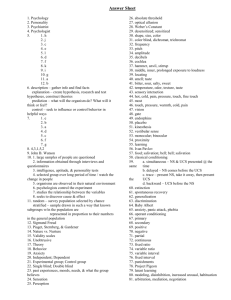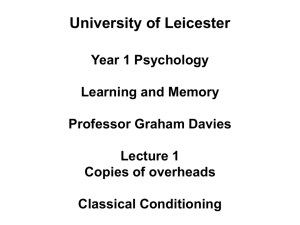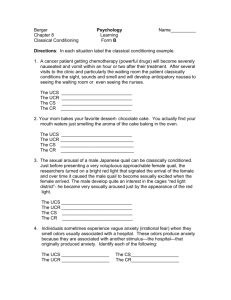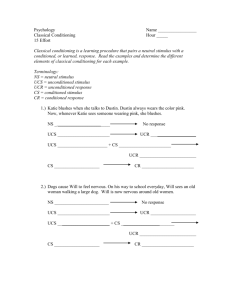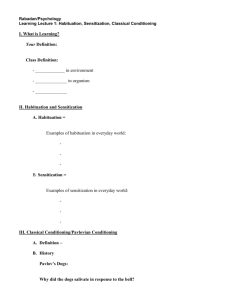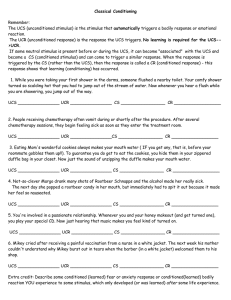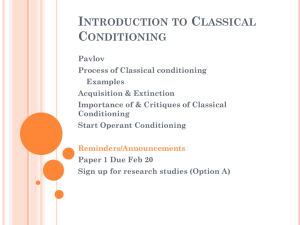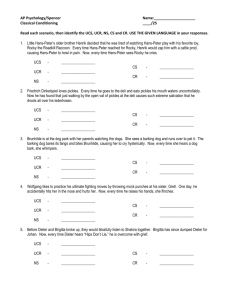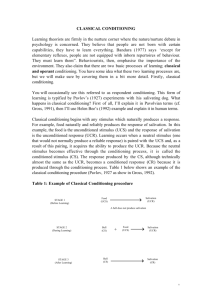class11_learning1 - HomePage Server for UT Psychology
advertisement
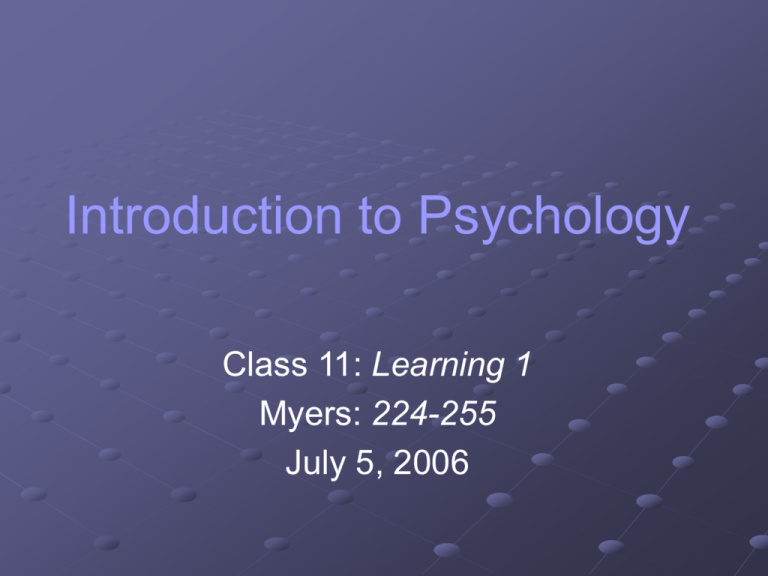
Introduction to Psychology Class 11: Learning 1 Myers: 224-255 July 5, 2006 Types of Learning A relatively permanent change—owing to experience—in the behavior of an organism Observational learning is learning from others’ experience and examples - Imitation parents, peers, media Associative learning is the learning that certain events occur together - Two stimuli thunder – lightning mom – food - Behavior and consequence naughty punished fire burned Overview CONCEPT Two stimuli Every response TERMINOLOGY PIONEERS Pavlov Classical Watson conditioning Operant Thorndike has a consequence conditioning Skinner Watch and learn Observational Bandura learning Observational Learning Learning by observation and imitation Also called modeling Children Adults Copycat incidents - Similar, successful, desirable Play behavior, gender roles, cuss words, smoking, TV - Jargon, fashion, ideas, TV Research Animal research - When unforgiving rhesus macaques growing up with forgiving stumptails - Gorillas learn how to eat with both hands - Rats, crows, pigeons Mirror neurons of the frontal lobe - Imitation - Language learning - Empathy (TOM) More research Anti-social behavior - Bobo doll experiments (1961) - Copycat killings/suicide - Violence on TV Pro-social behavior - Good Samaritans of the Holocaust Little Albert (1920) Classical Conditioning A learning process whereby a previously neutral stimulus becomes associated with a particular physiological or emotional response by being paired with another stimulus that does produce that physiological or emotional response UCS, UCR, CS, and CR UCS, the unconditioned stimulus and UCR, the unconditioned response Stimulus-response pair that occurs naturally Food (UCS) Salivation (UCR) CS, the conditioned stimulus and CR, the conditioned response A stimulus-response pair that was originally disconnected They become associated because of repeated pairing of the CS with the UCS UCS (food) UCR (salivation) CS (bell) + UCS (food) UCR (salivation) CS (bell) CR (salivation) 1. Breakfast tacos (UCS) 2. 3. Coffee (CS) + Breakfast tacos (UCS) Coffee (CS) Salivation (UCR) Salivation (UCR) Salivation (CR) Stages Acquisition Extinction Spontaneous recovery Generalization Discrimination Tomorrow Applications of CC Operant Conditioning Applications of OC
